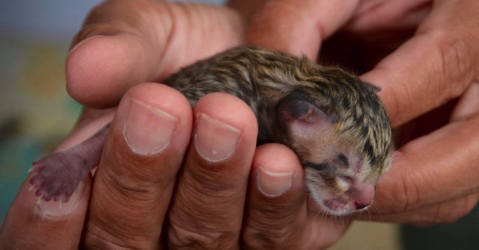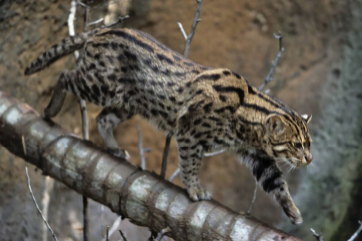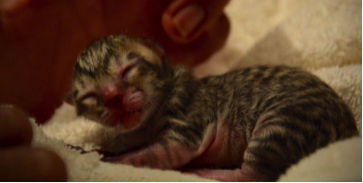Street-Side Surprise: Family Adopts Abandoned Cat, Uncovers Its Extraordinary Identity
One day, a Thai man was heading home from work when he spotted a small animal on the street. Upon approaching, he realized it was a kitten, though it hadn’t made a sound since birth.
Seeing how vulnerable and alone the kitten was, the man decided to take it home and provide the care it needed. It was clear the kitten wouldn’t have been able to survive on its own in the streets.
Once in the man’s home, the kitten was given milk from a bottle and received excellent care. It quickly adapted and found comfort in its new environment.

As time passed, the kitten grew, and the man began to notice it didn’t quite resemble a typical cat. Eventually, it became evident that this was an entirely different species of mammal.
Seeking professional advice, the man consulted a veterinarian who confirmed that the creature was, in fact, a fishing cat.
This ‘wild cat’ can reach double the size of a regular cat and has a penchant for aquatic life. Its name stems from its fondness for hunting and consuming fish.
According to Wikipedia, the fishing cat (Prionailurus viverrinus) is a medium-sized wild cat native to South and Southeast Asia. Since 2016, it has been classified as Vulnerable on the IUCN Red List due to the destruction of wetlands, which has led to a sharp decline in their population.

The fishing cat boasts smooth, grayish fur with evenly spaced markings on its body. Its back is adorned with small, orderly rows of black or dark brown markings of various sizes.
In adulthood, a fishing cat can have a tail length of 25–33 cm, a body length of 75–86 cm, and weigh between 8–14 kg. Its legs are long and end in partially webbed toes, equipped with sharp, semi-retractable claws.
Luckily, Simba (as the man named him) is not only alive but thriving. However, it’s crucial for Simba to continue thriving.

The World Fund for Nature notes that in Thailand, poaching and retribution killing have been the main factors contributing to a high mortality rate of 84% among fishing cats.
Therefore, Simba’s survival isn’t just a stroke of luck; it’s vital for the survival of his species.
Below is a video featuring other rescued cats, although they aren’t fishing cats, they’re equally adorable.
It’s important to remember that animals, like humans, are living beings, and their survival is integral to the well-being of our planet. If you agree, please consider sharing this article!
